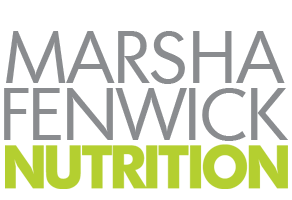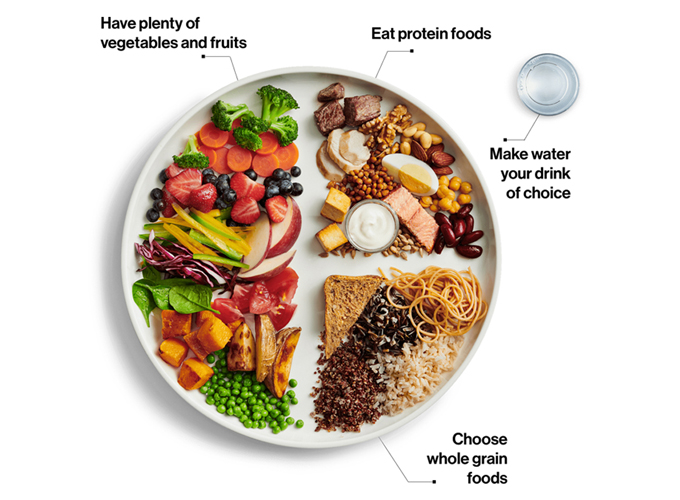Meet Canada’s Food Guide 2019
As a Clinical Nutritionist and Certified Cancer Coach, I’m excited about the important and progressive changes made to Canada’s Food Guide in its recent makeover. To help you understand what’s changed and why you’ll want to care, I’m sharing my recent interview with Rethink Breast Cancer.
How do the changes to the Canada Food Guide affect cancer patients?
The reduction of dairy as a food group is a big step forward. Dairy containing foods can be hard to digest and can be pro-inflammatory. Some people are sensitive to its different compositions of lactose, whey and/or casein.
The reduction in meat is wise and consistent with the Canadian Cancer Society’s recommendation to limit red meat and avoid processed meat (most fast food meats, ham, bacon, salami, hot dogs and sausages because they are smoked or cured with preservatives). Also, cooking fatty meat under high heat produces carcinogenic heterocyclic amines.
An increase in plant-based protein (including include nuts, seeds, legumes, tofu and tempeh) along with plenty of fruits and vegetables is probably the most significant improvement. Vegetables and fruits are nutrient dense and also contain fibre! (see #2)
The reduction of fruit juice and chocolate milk to making water your drink of choice is a significant change as they are a large source of refined sugars!
Lastly, whole grains (a good source of energy and B vitamins) are also a much better choice than refined processed grains.
What are the benefits of embracing more plants in your diet?
These foods contain vitamins, minerals, fibre and phytonutrients and research shows a reduction in heart disease, cholesterol, type 2 diabetes and obesity (which may also be risk factors for some cancer patients) when eating these foods. Specifically, these foods also contain lignans, flavonoids, antioxidants and phytochemicals, which also correlates to a reduction of risk of several types of cancer such as breast, colorectal and prostate. Plant fibre (soluble and insoluble) aids in digestion, promotes a healthy gut microbiome and is strongly associated with lower disease risk in many health conditions including colon cancer.
Why are the new proportions vs serving sizes a better approach?
The old guide was not very realistic as it’s difficult for individuals to weigh or measure their food. The new recommendations are visual, emphasizing more nutrient-rich options and proportions which can lead to better choices. Understanding food quality and not counting serving sizes is key and will bring much awareness!
What is your take on the new warnings against alcohol consumption, especially as they relate to cancer prevention?
I believe it is a wise and prudent warning as there is a direct link and growing concern with alcohol and its relationship to obesity and several cancers like liver, oral and throat, colorectal and breast cancers as well as alcohol’s contribution to other serious diseases. It is no longer just about alcohol’s relation to sugar and empty calories rather its overall effect on health.
Why is mindfulness important when it comes to eating?
There has been a trend towards eating on-the-go, in your car, at your desk, fast foods and drive through eating. Bringing back home cooking, and eating around the table with family, friends and community can promote awareness, well being and encourage eating whole foods rather than processed foods in a box.
When you think of the needs of cancer patients, both in-treatment or post-treatment, is there anything that still needs addressing when it comes to healthy eating?
In my opinion, there needs to be a greater emphasis on food quality, digestive health and individualized nutrition. Food quality includes a discussion on pesticides and genetically modified foods along with methods of farming. Optimizing digestive health and the microbiome is gaining a lot of attention in the field of nutrition and cancer research and includes the absorption of nutrients and the metabolism of food into energy. Individualized nutritional counselling is recommended to address and identify individuals needs through their cancer journey and for prevention.
Final thoughts on the new and improved Canada Food Guide?
The guide is a significant improvement yet simplistic. It is a great start but needs more direction for many individuals depending on health needs. There are still some important details missing around the quality of dairy (low fat vs high fat), and the protein choices on the new plate. Healthy fats and oils also play a vital role in our health and this is not displayed as a category on the visual food plate. The section on whole grains may still be too generous for people with diabetes, obesity and heart disease.
A goal and wish of mine would be to bring healthier food initiatives to hospitals and other public spaces like removing vending machines, reducing processed foods, refined sugar and bringing in fresh produce, whole food and groceries into these institutions!
Source:
“Meet Canada’s Food Guide 2019”, ReThink Breast Cancer, Retrieved 11 Feb 2019. <https://rethinkbreastcancer.com/what-you-need-to-know-about-the-new-canada-food-guide>.
Marsha Fenwick, C.N.P. R.R.T.
Marsha is not your typical nutritionist. She began her career 20 years ago as a Registered Respiratory Therapist. Later, she earned her certifications as a Registered Nutritional Consultant Practitioner, Certified Nutritional Practitioner, and Registered Orthomolecular Health Practitioner. Marsha is also a Certified Cancer Coach. Her clinical practice specializes in: sustainable healthy weight loss, digestive health, women’s hormones, diabetes, heart health, and cancer prevention and recovery. For more information and to book a FREE 15 minute consultation go to Marsha Fenwick Nutrition.







